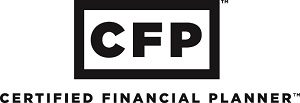How often do you look at your portfolio? We have some clients who look at it everyday and others that only check it quarterly. Volatile markets tend to make people a little more nervous about how their investments are performing, and we believe it causes them to look at their investments more often. Â
As Investment Advisors, it’s our job to teach our clients that they don’t need to look at it every day. It will drive you crazy to see your nest egg fluctuate as much as we have seen the market move recently. The nice thing about stocks and bonds is that you know exactly what they are worth at any given time. We all have a tendency toward wanting to know how we are doing with our investments, but it shouldn’t be daily. How often do you check the price of your home or your rental properties? We are willing to bet not that often. For many, the home is the largest investment owned, but we don’t check or even know what it’s worth daily. We have no way of knowing what it’s worth until someone makes an offer to buy it at certain price. Does the drop in your home value cause you to panic or lose sleep? It shouldn’t, and neither should market fluctuation for your portfolio. If it does, then you have too much risk on and you need to have a portfolio built with less volatility. Just remember, there is a trade off with risk and return with investing. Â
Many of our clients come in for meetings and want to know how their portfolio is performing in comparison to the S&P 500. The S&P 500 is the major market index that is used in comparing performance vs equity portfolios. If your portfolio is not 100 percent equities or stocks, then comparing your portfolio returns to the S&P 500 is not a fair comparison. A portfolio that has a 70 percent stock to 30 percent fixed income weighting is not going to outperform the S&P 500 in a bull market. It will tend to outperform in down markets and will have less volatility due to the diversification of asset classes. For many retirees, this is the proper allocation given the current interest rate environment. Â
The fact is that as humans we tend to feel twice the pain as we see our portfolios decline in value then when we see it appreciate. Investing should not be considered a short-term proposition. We need to look at our investments over the long-term and not make rash decisions based on daily market fluctuations. Everyone has a different situation and we treat each of our clients based on their goals, objectives, and risk tolerance. Portfolios can be tailored to meet each client’s needs. There is no one size fits all when it comes to investing. We encourage you to call us for a free portfolio review. We have both Certified Financial Plannersâ„¢ and a Chartered Financial Analyst on staff to assist you in making the correct investment decisions. Â
Am I eligible to Convert my Traditional IRA to a Roth IRA?
Converting your Traditional IRA to a Roth IRA can be one of the best financial decisions made when saving for retirement if done correctly. Prior to 2010 there was an income limit that restricted the conversion to a Roth IRA if your (AGI) was over $100,000. As of 2013, the income limitation does not exist for a conversion, but it still exists for contributions. This does not mean it will not come back in the future, but for 2013 and beyond anyone can convert an existing Traditional IRA to a Roth IRA regardless of income.
For example, someone has a Traditional IRA with $350,000 invested, that IRA can be converted to a Roth and all the taxes need to be paid for the tax year the conversion was completed. After converting to a Roth, the money grows tax-free. Paying the taxes on this money now might sound like a tough pill to swallow, but the potential tax savings down the road can be significant. Wouldn’t you rather pay taxes on $350,000 now than pay taxes on $1,000,000 in the future? One of the keys to doing this correctly is paying the taxes with funds outside of a qualified plan. Paying the taxes with money from the IRA defeats the purpose and will negate the full tax saving potential.
This is just one example of completing a Roth conversion. You can do partial conversions as well. This means you do not have to convert the entire account. You could develop a strategy of doing partial Roth conversions over multiple years. The key is to consult with your tax advisor or accountant to make sure the conversion will not put you into another tax bracket. Every dollar you convert is taxed at your ordinary income tax rate. This strategy works best for younger investors who have longer to allow the money to grow and compound. It can also work well for an older investor who is in a low tax bracket. Another reason to convert to a Roth is that Roth IRAs are not subject to the Required Minimum Distribution after you reach age 73. For those of you out there that do not plan to use your IRA money to live this can be a huge advantage when it comes to passing along your IRA to your beneficiaries. Roth IRAs continue to grow tax-free after the conversion and after you die. There are distribution requirements for the beneficiaries, but the distributions are tax-free as well.
This strategy might not be right for everyone. I would advise you to consult with a Certified Financial Planner™ or your tax advisor prior to taking advantage of this potentially large tax savings. One of the best times to complete a Roth conversion is when the value of your Traditional IRA has fallen due to a market correction like we experienced in 2022. If you have questions on this article or would like to schedule a free financial review. Please contact Jay Chapman at 772-320-9658 or email Jay@ChapmanCapitalAdvisors.com.




